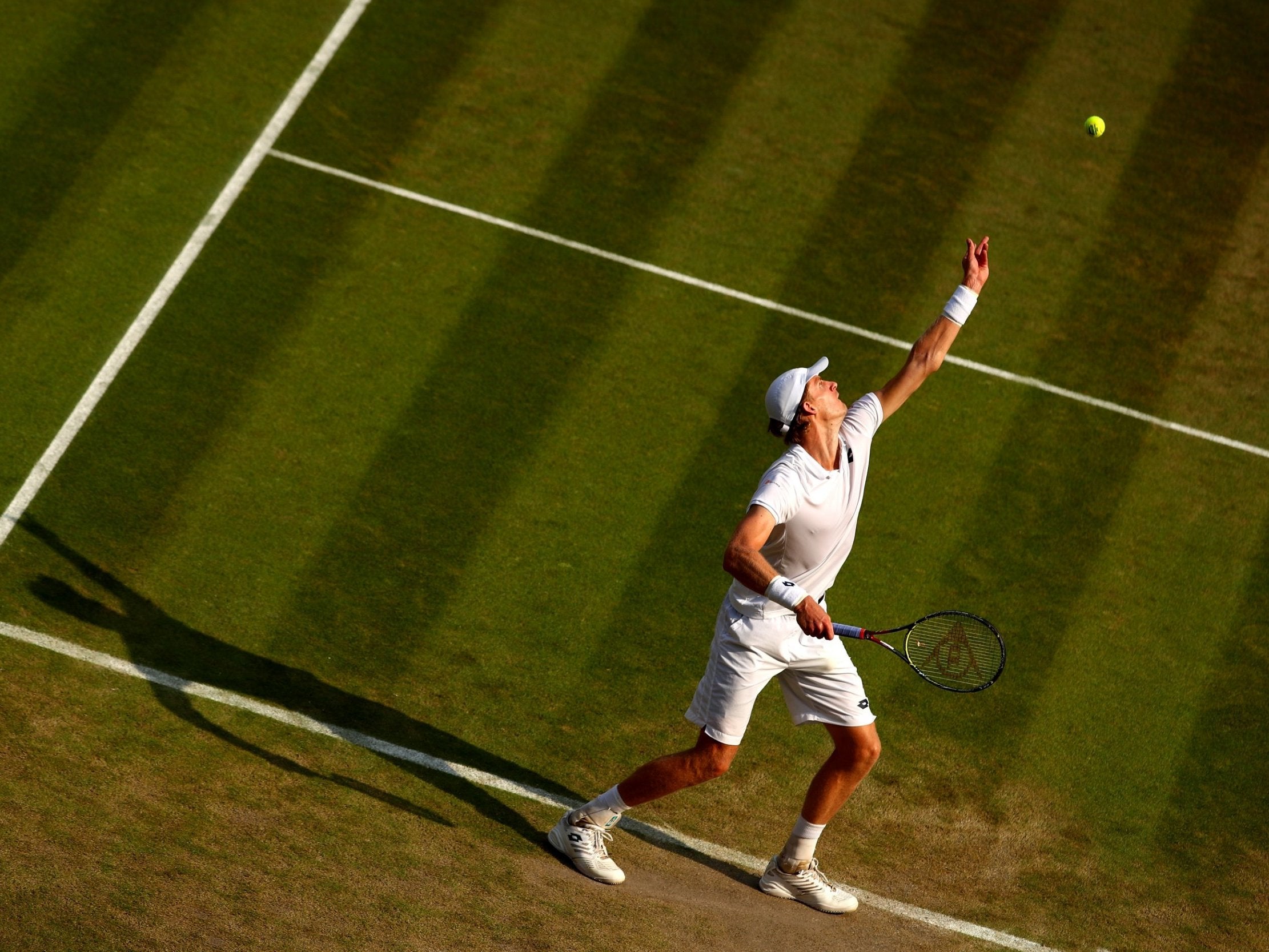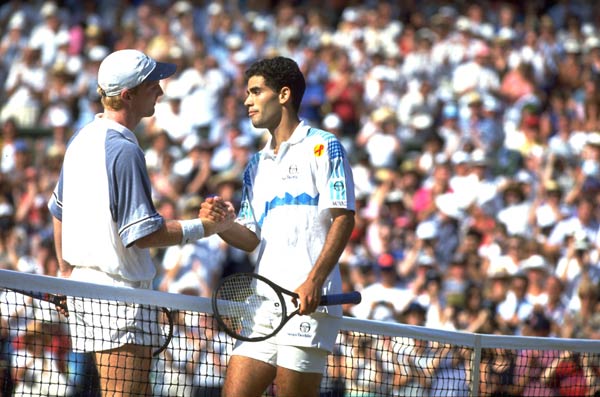Wimbledon 2018: Roger Federer must feel like he has taken a walk in the valley of giants
Kevin Anderson, his next opponent, is 6ft 8in tall, while the two other quarter-finalists in his section are John Isner (6ft 10in) and Milos Raonic (6ft 5in), writes legendary coach Nick Bollettieri

Your support helps us to tell the story
From reproductive rights to climate change to Big Tech, The Independent is on the ground when the story is developing. Whether it's investigating the financials of Elon Musk's pro-Trump PAC or producing our latest documentary, 'The A Word', which shines a light on the American women fighting for reproductive rights, we know how important it is to parse out the facts from the messaging.
At such a critical moment in US history, we need reporters on the ground. Your donation allows us to keep sending journalists to speak to both sides of the story.
The Independent is trusted by Americans across the entire political spectrum. And unlike many other quality news outlets, we choose not to lock Americans out of our reporting and analysis with paywalls. We believe quality journalism should be available to everyone, paid for by those who can afford it.
Your support makes all the difference.Roger Federer stands 6ft 1in tall, but when he looks around him he must feel like he’s taken a walk in the valley of giants. Holy cow, just look at the other guys left in his quarter of the draw. Kevin Anderson, his next opponent, is 6ft 8in tall, while the two other quarter-finalists in his section are John Isner (6ft 10in) and Milos Raonic (6ft 5in).
All three men have huge serves, which can be such an advantage on grass. Isner, for example, hasn’t been broken once in his four matches so far and has had to defend only six break points.
When you’re serving like that, you know that you need only two or three good return games to win your matches. Provided you get close into the net you don’t necessarily have to be a great volleyer either, though I think Big John actually volleys better than most.
The closer you get to the net behind a big serve the better your chance of winning the point. If you’re only getting in as far as the service line you’ll be leaving yourself vulnerable to passing shots.
Isner has hit more aces (135) than anyone else in the tournament so far, but Raonic (117) is not far behind him. Boy, when they meet in the quarter-finals on Wednesday Wimbledon might have to hand out body armour to the line judges and ball kids.
The serves will be a big factor, but I fancy that it could be Isner’s superior ground strokes that make the difference. He also has a good head-to-head record against Raonic.

Isner moved particularly well in his fourth-round win over Stefanos Tsitsipas and I liked the fact that he wasn’t afraid to come into the net and volley. As for Raonic, I think he has to capitalise on that big serve of his by coming forward. He can only get so far by staying at the back of the court.
Tuesday’s match of the day: Jelena Ostapenko has been flying under the radar for most of this tournament but I think she’s emerging as a real contender. I expect her to have too much for Dominika Cibulkova in their quarter-final.
What impresses me most about Ostapenko is the way she has modified her game for grass. She only knows one way to play - which is to beat the crap out of the ball - but has modified her strokes on grass by hitting the ball much flatter.
When you’re playing on clay, it pays dividends to put a lot of spin on the ball, making it bounce up high. On grass, however, top spin is not so effective. Ostapenko, who won the French Open last year, has taken some of the spin off her strokes and as a consequence they're shooting through the court. Aliaksandra Sasnovich just couldn’t cope with the weight of her shots.
Cibulkova is a gutsy fighter, but I take Ostapenko to beat her and get through to her first Wimbledon semi-final. I’m sure she’s happy not to be in the same half of the draw as Serena Williams, who looked comfortable on court for the first time in this tournament when she beat Evgeniya Rodina.
What the best players have taught me: Every day through the tournament I’m recalling the things I’ve learned from some the great players I’ve worked with over the years at the IMG Academy I founded in Florida.
Jim Courier came to me when he was 15. I remember his mother Linda writing a super “thank you” to me and to IMG for giving him a full scholarship at the academy. She asked me to change Jim’s two-handed grip on his backhand, but I told him: “The heck with your backhand, hit forehands instead!”.
He was a great worker. He showed that to be a champion you have to accept what work has to be done – and do it. Jim has become a great champion off the court as well. He’s been a very good US Davis Cup captain and is one of the best commentators in the business.

And what I can teach you: Being able to hit the ball big is obviously a huge asset for any player, but if you’re facing a powerful hitter there’s no need to think that everything is lost. What you need to do is find a way to disrupt your opponent’s timing.
Trying to fight fire with fire is not the answer. Most big hitters like pace on the ball, because many players find it easier to use their opponent’s pace than to generate their own.
The key is to vary the pace of your shots and to use plenty of different spins. Keep the ball out of your opponent’s preferred contact zone. You can do that sometimes by hitting the ball short and keeping it low. Hitting high bouncing balls can also be a good tactic – anything to throw off your opponent’s timing.
Read all about it: Later this summer the Professional Tennis Registry will be publishing my personal account of what I’ve learned in a lifetime of coaching tennis. You can find out how to buy the book at www.ptrtennis.org.
Join our commenting forum
Join thought-provoking conversations, follow other Independent readers and see their replies
Comments